Tennis has long been considered an incredibly graceful and inherently calculating sport, with origins as lawn tennis in Victorian England played only by the nobility. Since the 1960s, the sport has experienced rapid growth through championships played by both professionals and amateurs, and growing media coverage of the sport broadcasted tournaments and showcased notable players and rivalries that added to the game’s appeal.
With a number of changes in equipment, etiquette, and, most significantly, the athletes permitted to play, there’s quite a bit of ground—or court—to cover. But don’t worry, we’re serving eleven titles on some of the sport’s history, techniques, and key events and figures that you’re sure to love.
So put down your rackets and pick up one of these books today. Then grab your rackets again and work on perfecting that backhand!

Love Game
As an inherently artistic sport, tennis demands a certain level of grace, endurance, and power of its players, and in Love Game, Elizabeth Wilson examines just how much strength tennis requires, both physically and mentally.
By examining its beginnings in Victorian England as a novel pastime in which both men and women could participate, to analyzing modern matches that have captivated audiences and left their marks on tennis history, Wilson provides a comprehensive history of the sport and its players in a thoughtful and illuminating account.
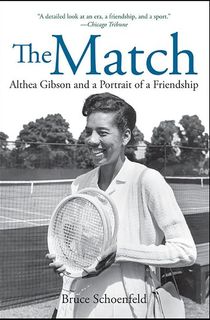
The Match
As underdogs shunned from the tennis circuit for their race and religion, Althea Gibson and Angela Buxton were an unlikely doubles pairing, and even more unlikely victors.
Gibson had been raised in Harlem and was no stranger to prejudice, but she had turned to athletics as a community that would welcome her and value her skill. Angela Buxton was the granddaughter of Russian Jews and faced her own obstacles of discrimination in her hometown of Liverpool, England. When both women decided to compete together at the 1956 Wimbledon, history was made.
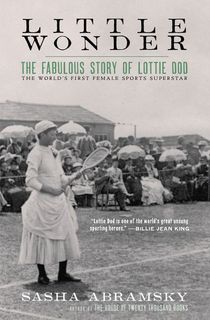
Little Wonder
Lottie Dod paved the way for female tennis stars like Billie Jean King and Serena Williams when she won Wimbledon for the first time at the age of fifteen, and went on to win four more times. In the late nineteenth and early twentieth centuries, Lottie Dod was a pioneer of women in sports, and after years of playing competitive tennis, she went on to excel in many other sports, becoming a British ladies’ golf champion and earning an Olympic silver medal in archery.
Though her career was remarkable, much of her years of distinction occurred prior to the rise of broadcast media, and by the end of World War I, Lottie Dod had become largely forgotten, but her role in the evolution of female athletes and women’s sports was integral.
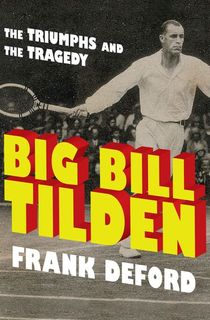
Big Bill Tilden
One of the most notorious names in tennis, Bill Tilden earned his reputation by dominating the sport throughout the 1920s with trademark grace, intelligence, and power. Tilden won championship after championship, and, as a testament to his intelligence, he wrote books about the sport while competing.
But his success came with a dark side. Sports writer Frank Deford sets out to tell of Tilden’s prowess and skill unlike the tennis world had seen before, and recounts the details of the athlete’s tragic fall.

Breaking Back
In his autobiography, James Blake tells the story of how his rising tennis stardom quickly turned into the most difficult battles of his life following multiple tragedies. Blake suffered a severe neck fracture on the court that forced him to the sidelines at the height of his career; soon after, his father—Blake’s inspiration for taking up tennis in the first place—was diagnosed with cancer.
Shortly after his father’s death, Blake contracted a rare virus that paralyzed half of his face and almost tipped his already precarious career over the edge, but through strength, passion, and the love that he had for his late father and their sport, Blake was able to not only heal, but once again rose to be one of the top tennis players in the world.
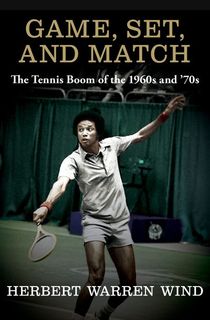
Game, Set, and Match
Sportswriter Herbert Warren Wind captures the graceful and dramatic world of modern tennis in his recount of the sport’s most notorious events and figures of the 1960s and 70s.
With legendary matches at Wimbledon and Forest Hills shaping the competitions, and showdowns between icons like Billie Jean King and Bobby Riggs altering the way female athletes are perceived, these decades were full of significant moments in tennis history. Wind delivers a “low-key, leisurely, impressionistic record of tennis in its booming decades,” (Kirkus Reviews).
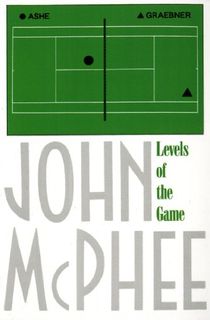
Levels of the Game
In Levels of the Game, John McPhee profiles two players whose rivalry shook up the tennis scene in the twentieth century. Arthur Ashe and Clark Graebner faced off at Forest Hills in 1968 in a match that, as McPhee describes, demonstrated much more than significant skill.
By analyzing the details of the match and equating them to situations faced off the court, McPhee addresses the many ways in which tennis resembles life, and how the answers to many pressing questions can be found within a well-played match.

String Theory
In this collection of David Foster Wallace’s writings on tennis, Wallace’s literary skill melds the intricacies and drama of tennis into comprehensive essays about the sport that he loved.
Wallace celebrates famous figures like Roger Federer, Michael Joyce, and Tracy Austin as they excelled in their careers, and reflects on his own career as a junior player. Wallace believed that tennis was the most beautiful sport to exist, and his essays on the subject reflect that passion remarkably.

The Racket
Conor Niland writes about the 99 percent of tennis players in the golden age, who travel the world hoping to climb the ranks of the prestigious championships without the resources and support of the industry’s favorite players.
His personal experience, as a player vying for greatness never quite achieved, lends Niland a unique perspective to the untold stories of professional tennis players internationally. The Racket is a memoir that focuses on the underdogs, and introduces a new side of tennis to the world.
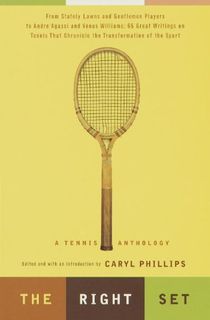
The Right Set: A Tennis Anthology (Vintage International)
The Right Set is an anthology of tennis essays written about the evolution of tennis as a gentleman’s pastime to a sport played by athletes and psychological geniuses.
For many years, tennis was a game reserved for nobility and developed a strict etiquette that has been challenged in recent decades as more players step onto the court and reject tradition in favor of innovation, earnings, and a love of the sport. The Right Set features writings by John McPhee, David Higdon, James Thurber, Martina Navratilova, and Martin Amis.

Serving Herself: The Life and Times of Althea Gibson
Althea Gibson was the most famous Black female athlete of the twentieth century, with eleven Grand Slam wins, a professional golf career, and countless victories in white-, male-dominated fields. But she faced numerous obstacles in both her private and professional life, battling against prejudice and breaking societal norms while struggling with the exposure that accompanies being in the public eye. Serving Herself narrates the life and times of the fierce athlete and courageous woman who carved out a place for Black women in tennis.





